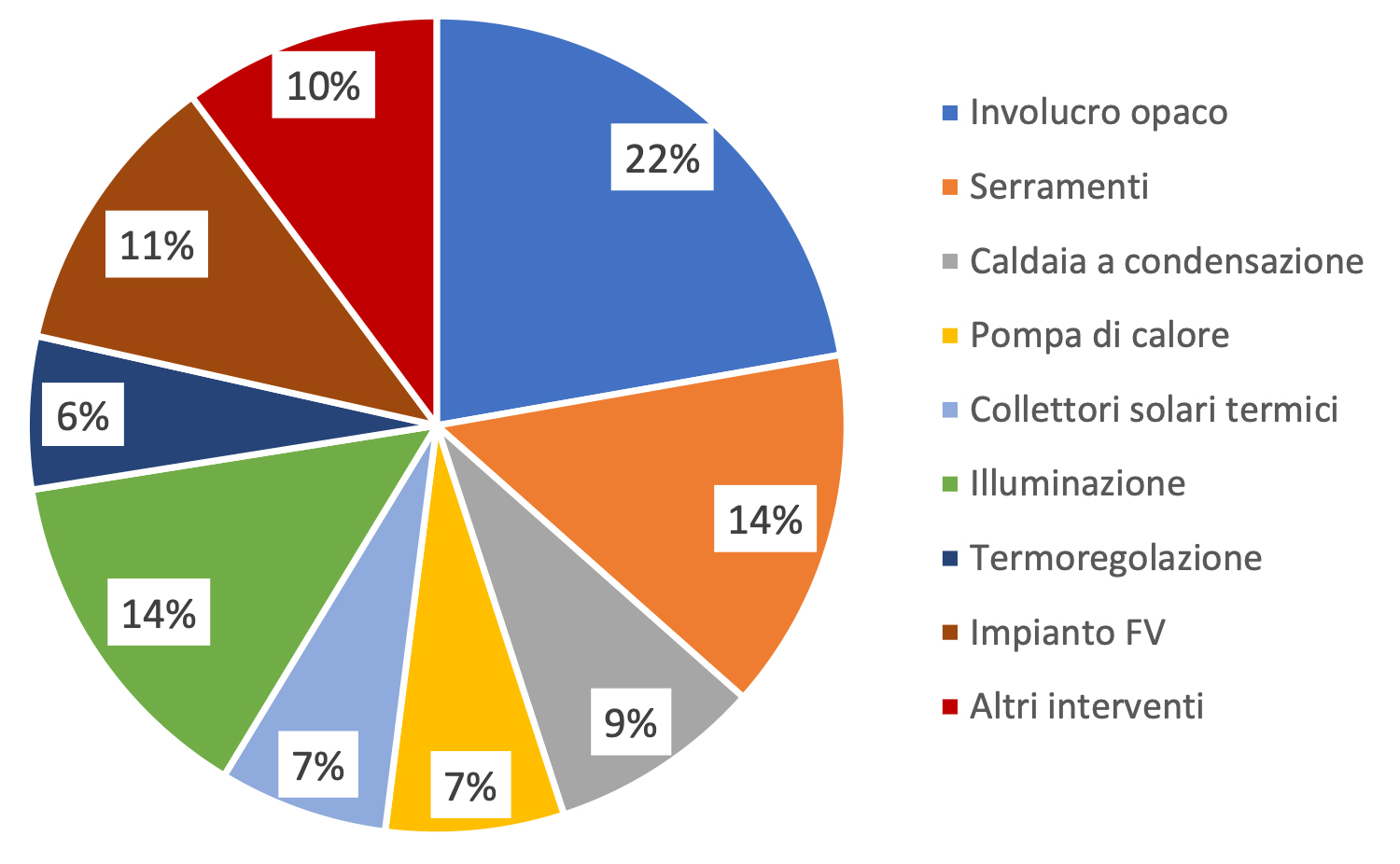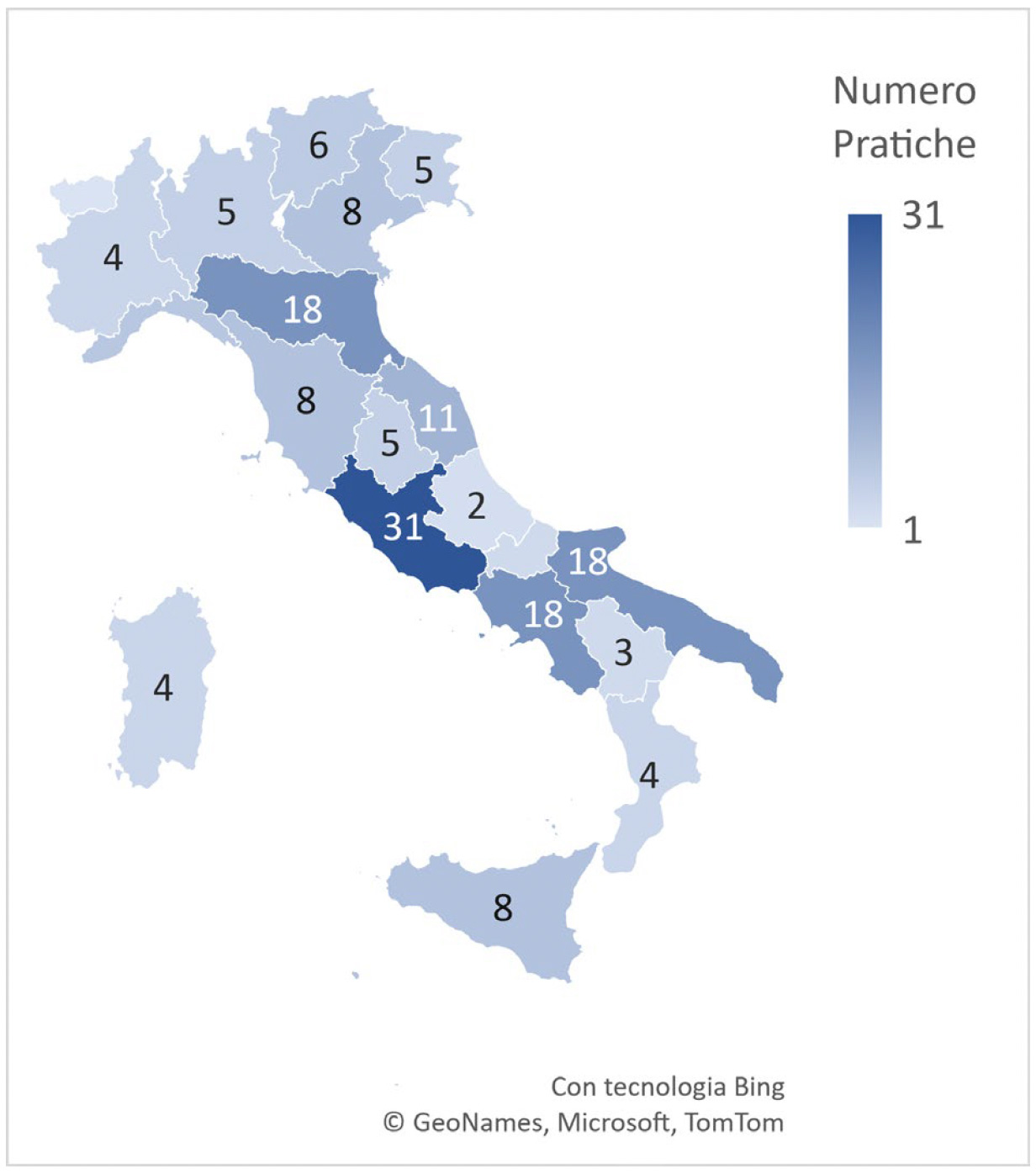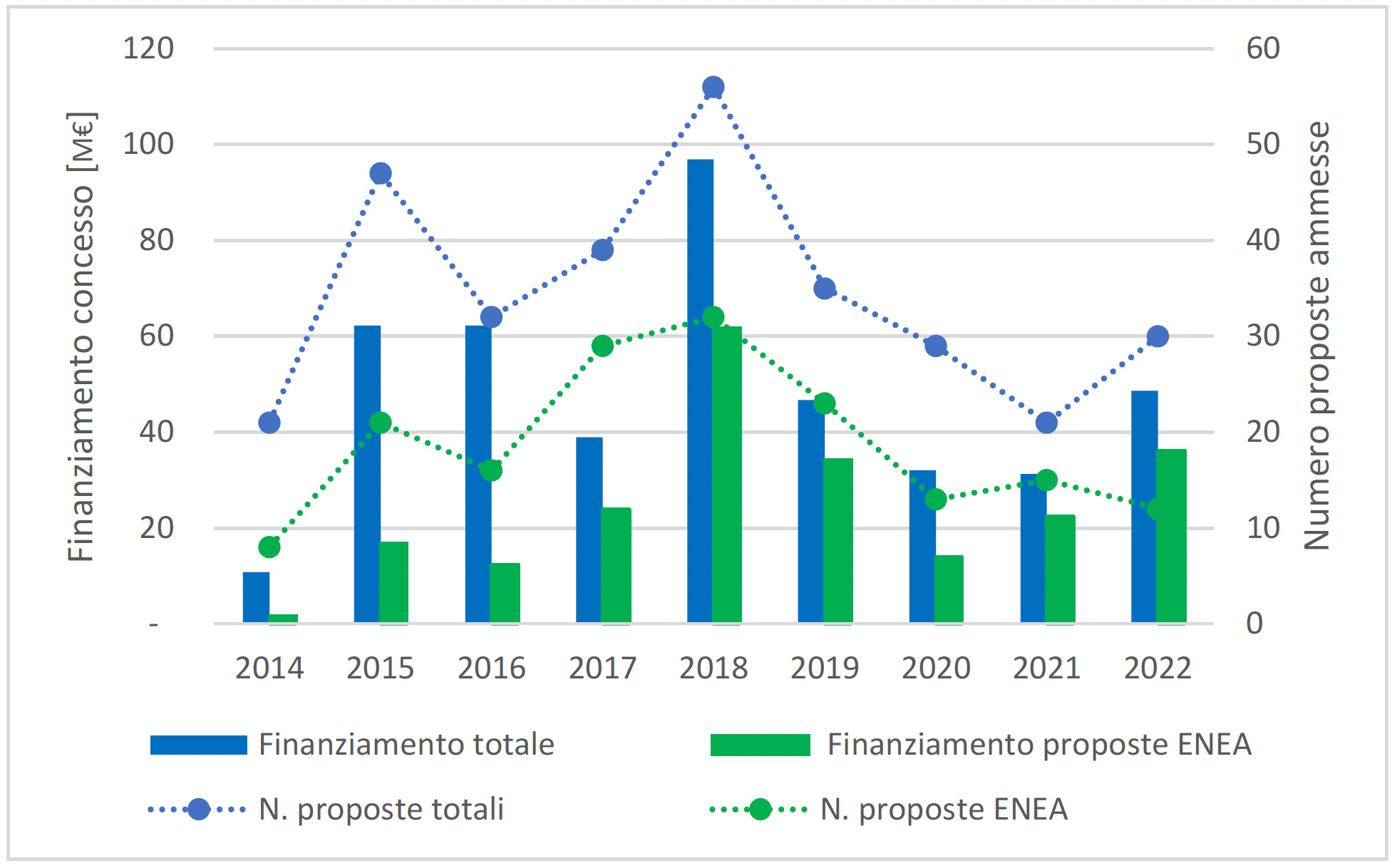Italian National Agency for New Technologies, Energy and Sustainable Economic Development

Energy: Public administration buildings, 430 millions invested for requalification
ENEA Report on Central Public Administration Building Requalification Program (PREPAC)
In order to improve the energy performance of central PA buildings, 430 million euro have been invested thanks to the Central Public Administration Buildings Requalification Program (PREPAC), which every year funds projects with the purpose of making more efficient at least 3% of the 16 million of m2 of surface[1]. This is shown by the ENEA report “The program for the energy requalification of central public administration buildings”, which contains the analysis of the 310 projects funded[2] in the period 2014-2022 to requalify over 2.5 million m2 (approximately 16% of the total), including Palazzo Chigi.
“Together with the GSE, we conducted an investigation on 641 projects presented by 2022, of which just over 48% were funded, making it possible to requalify on average 2% of air-conditioned public surface area per year”, explained Laura Ronchetti and Paolo Signoretti, researchers at the ENEA Energy Efficiency in Buildings and Urban Development Laboratory, among the authors of the report.
The study highlights that the highest funding concerns projects presented by the Ministry of Defence, which also has the lead in total funds allocated (56% for a total of 240 million euro), followed by the Ministries of the Interior (19%), Economy (9%) and Justice (6%).
The report contains a focus on 169 projects evaluated by ENEA alone, equal to 55% of the 310 proposals funded overall[3]: in the first three places by intended use we find barracks (470 thousand m2 of redeveloped surface), offices ( 380 thousand m2) and penitentiaries (261 thousand m2, 8% of the total surface area of prisons).
Approximately half of the projects concern buildings located in four regions (Campania, Emilia-Romagna, Lazio, and Puglia) and mainly in climate zones D (37%), E (33%) and C (24%)[4].
The most frequent intervention concerns energy requalification[5] (63% of cases and 75% of the total surface area), while major renovations[6], although less frequent (37% of cases), have greater consequences in terms of emissions of CO2 avoided (53% of the total) and energy saved (50%). The most frequent works concern the insulation of the opaque casing, the replacement of windows and the efficiency of the lighting system (fig.1). The analysis of the proposals funded starting from 2017 highlights how the total expected primary energy savings are 1.8 TWh while the total CO2 emissions avoided are approximately 295 thousand tonnes.
“Over the course of the approximately ten years of the program, the number of proposals received has undergone a fluctuating variation and the results achieved are not yet fully in line with the PREPAC objectives, which envisage requalifying at least 3% of the air-conditioned surface of the Public Central administration per year”, explained Laura Ronchetti and Paolo Signoretti. “Among the main factors associated with failure to reach the target - they concluded – is certainly the strong decline coinciding with the two-year pandemic, the low level of eligibility of the proposals presented in the period prior to the publication of the Technical Guidelines, and the appeal by the Administrations to other requalification incentives".
According to an ENEA analysis conducted on the data contained in the SIAPE portal, in Italy 60% of public buildings or buildings for public use are arranged according to energy classes E, F and G.
Central PAs which intend to participate in the PREPAC can submit their project proposals by 15 July of each year[7]. For the decade 2021-2030 the financial resources made available by the PREPAC amount to 75 million euro per year.
Notes
[1] Air-conditioned surface to be made more efficient reported by the Court of Auditors https://www.corteconti.it/Download?id=20deaefb-aaea-44c0-a55e-e1e7f2cd3ee2
[2] Approved by the control room chaired by the Ministry of the Environment and Energy Security and composed of representatives of the Ministries of Business and Made in Italy, Infrastructures and Transport and Economy and Finance, with the technical and scientific support by ENEA and GSE.
[3] The GSE evaluated the remaining 141 projects of the total 310 admitted to funding.
[4] The classification of the national territory by climate zones was introduced by Presidential Decree. 412/1993.
[5] Energy requalification is defined as the intervention that affects the building envelope with an impact less than or equal to 25% of the overall gross dispersing surface of the building (Ministerial Decree Minimum Requirements ).
[6] Si definisce ristrutturazione importante l’intervento che interessa l’involucro edilA major renovation is defined as an intervention which affects the building envelope with an incidence greater than 25% of the overall gross dispersing surface of the building and which may affect the winter and/or summer air conditioning system (Ministerial Decree Minimum Requirements ).
[7] The program implementation methods (Ministerial Decree PREPAC) and the Guidelines for the presentation of PREPAC projects are available on the page of the Ministry of the Environment and Energy Security at the link: https://www.mase.gov.it/energia/efficienza-energetica/pubblica-amministrazione



